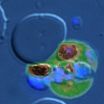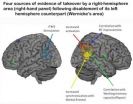(Press-News.org) WASHINGTON, DC, January 15, 2013 — College students who aren't studying hard may have their parents' financial support to blame.
A new study by University of California, Merced, sociology professor Laura T. Hamilton found that students' GPAs decreased with increased financial support from their parents. The study also found that students with financial aid from their parents were more likely to complete college and earn a degree. The study, "More is More or More is Less? Parental Financial Investments during College," will appear in the February issue of the American Sociological Review and has been posted on the publisher's website.
"Students with parental support are best described as staying out of serious academic trouble, but dialing down their academic efforts," Hamilton wrote in the study.
Over the past several decades, colleges and universities have responded to deep cuts in external funding by increasing tuition. The costs increasingly fall on the shoulders of American parents, who often make difficult financial decisions to send their children to college. Hamilton wanted to know whether parental dollars translated to better college outcomes for children or whether they created disincentive to excel.
The answer turned out to be complex, with parental support reducing academic achievement but improving the likelihood of graduation.
"Regardless of class background, the toll parental aid takes on GPA is modest," Hamilton wrote. "Yet, any reduction in student GPA due to parental aid—which is typically offered with the best of intentions—is both surprising and important."
College students may spend their time in ways that don't reflect their parents' wishes, Hamilton said. A different study found today's college students spend an average of 28 hours a week on classes and homework combined, less than an average high school student spends in school alone. The same study also found college students spend an average of 41 hours a week on social and recreational events.
According to Hamilton's study, parental aid increased the odds of graduating within five years. Students with no parental aid in their first year of college had a 56.4 percent predicted probability of graduating, compared with 65.2 percent for students who received $12,000 in aid from their parents.
Hamilton said students might be satisficing—trying to be adequate on multiple fronts rather than trying to excel in one particular area. This makes sense in the context of today's young adult college experience, where there are great freedoms, little oversight, and many social opportunities.
Hamilton notes that many other funding sources such as grants and scholarships, work-study, student employment, and veteran's benefits do not have negative effects on student GPA. Unlike parental aid or loans, these other funding sources may come with a sense of having been earned by the student. With decreased state and federal support for higher education, however, such funds are increasingly hard for families to access.
Hamilton cautions that her results do not mean parents should cut off financial support altogether—particularly given the importance of parental funds for getting a degree. However, it is important for parents to set standards, such as a required GPA, and keep students accountable for their performance.
For the study, Hamilton relied on two nationally representative datasets collected by the National Center for Educational Statistics. The research was supported by a grant from the American Educational Research Association.
###
About the American Sociological Association and the American Sociological Review
The American Sociological Association ( www.asanet.org), founded in 1905, is a non-profit membership association dedicated to serving sociologists in their work, advancing sociology as a science and profession, and promoting the contributions to and use of sociology by society. The American Sociological Review is the ASA's flagship journal.
The research article described above is available by request for members of the media. For a copy of the full study, contact Daniel Fowler, ASA's Media Relations and Public Affairs Officer, at (202) 527-7885 or pubinfo@asanet.org.
For more information about the study, members of the media can also contact Scott Hernandez-Jason, University of California, Merced, at 209-228-4408 (office), 209-756-2368 (cell), or shernandez-jason@ucmerced.edu.
Parents' financial help linked to lower college GPAs, higher graduation rates
2013-01-16
ELSE PRESS RELEASES FROM THIS DATE:
ChemCam follows the 'Yellowknife Road' to Martian wet area
2013-01-16
LOS ALAMOS, N.M., January 15, 2013 — Researchers from Los Alamos National Laboratory and the French Space Agency have tracked a trail of minerals that point to the prior presence of water at the Curiosity rover site on Mars.
Researchers from the Mars Science Laboratory's ChemCam team today described how the laser instrument aboard the Curiosity Rover—an SUV-sized vehicle studying the surface of the Red Planet—has detected veins of gypsum running through an area known as Yellowknife Bay, located some 700 meters away from where the Curiosity Rover landed five months ago.
"These ...
First in the world - Singapore scientists discover genes responsible for cornea blindness
2013-01-16
Scientists at Singapore Eye Research Institute and A*STAR's Genome Institute of Singapore have succeeded in identifying genes for central corneal thickness that may cause potentially blinding eye conditions. These eye conditions include glaucoma, as well as the progressive thinning of the cornea, which may eventually lead to a need for corneal transplantation.
The authors jointly led a multi-centre study involving 55 hospitals and research centres around the world. They performed a meta-analysis on more than 20,000 individuals in European and Asian populations. Their ...
Body's ibuprofen, SPARC, reduces inflammation and thus bladder cancer development and metastasis
2013-01-16
Cancer researchers are increasingly aware that in addition to genetic mutations in a cancer itself, characteristics of the surrounding tissue can promote or suppress tumor growth. One of these important tissue characteristics is inflammation – most cancers prosper in and attach to inflamed tissue and so many cancers have developed ways to create it.
A University of Colorado Cancer Center study published today in the Journal of Clinical Investigation shows that the protein SPARC (Secreted Protein Acidic and Rich in Cysteine) acts much like an anti-inflammatory drug, attempting ...
JCI early table of contents for Jan. 16, 2013
2013-01-16
Could probiotics help HIV patients?
Antiretroviral (ARV) drugs are the first line therapy for patients with HIV; however, ARV-treated, HIV-infected individuals still have a higher mortality rate than uninfected individuals. During the course of infection, HIV patients develop inflammation that damages the walls of the intestines, known as the gut mucosa, allowing intestinal microbes to escape and enter the blood stream to cause a life-threatening systemic infection. The health of the gut mucosa is significantly influenced by the complement of bacteria in the gut and ...
Could probiotics help HIV patients?
2013-01-16
Antiretroviral (ARV) drugs are the first line therapy for patients with HIV; however, ARV-treated, HIV-infected individuals still have a higher mortality rate than uninfected individuals. During the course of infection, HIV patients develop inflammation that damages the walls of the intestines, known as the gut mucosa, allowing intestinal microbes to escape and enter the blood stream to cause a life-threatening systemic infection. The health of the gut mucosa is significantly influenced by the complement of bacteria in the gut and there is mounting evidence that probiotic ...
Hepatitis B virus promotes oncogenesis through microRNA modulation
2013-01-16
Viruses prompt oncogenic transformation by genetically altering infected cells. Several recent studies have demonstrated that viruses alter the expression of microRNAs, non-coding RNA molecules that can block the expression of target genes. In this issue of the Journal of Clinical Investigation, Xiaoje Xu and colleagues at the Beijing Institute of Biotechnology report that miR-148a is repressed by hepatitis B virus (HBV) X protein (HBx) to promote growth and metastasis of liver cancer. In normal liver cells, miR-148a represses the expression of the oncogenic protein HPIP, ...
Trapping malaria parasites inside host cell basis for new drugs
2013-01-16
PHILADELPHIA - One of the most insidious ways that parasitic diseases such as malaria and toxoplasmosis wreak their havoc is by hijacking their host's natural cellular processes, turning self against self. Researchers from the Perelman School of Medicine, University of Pennsylvania and Johns Hopkins University, led by Doron Greenbaum, Ph.D., assistant professor of Pharmacology at Penn, have identified the cell signaling pathway used by these parasites to escape from and destroy their host cells and infect new cells -- pointing the way toward possible new strategies to ...
Light from the darkness
2013-01-16
On the left of this new image there is a dark column resembling a cloud of smoke. To the right shines a small group of brilliant stars. At first glance these two features could not be more different, but they are in fact closely linked. The cloud contains huge amounts of cool cosmic dust and is a nursery where new stars are being born. It is likely that the Sun formed in a similar star formation region more than four billion years ago.
This cloud is known as Lupus 3 and it lies about 600 light-years from Earth in the constellation of Scorpius (The Scorpion). The section ...
New Carnegie Mellon research reveals exactly how the human brain adapts to injury
2013-01-16
PITTSBURGH—For the first time, scientists at Carnegie Mellon University's Center for Cognitive Brain Imaging (CCBI) have used a new combination of neural imaging methods to discover exactly how the human brain adapts to injury. The research, published in Cerebral Cortex, shows that when one brain area loses functionality, a "back-up" team of secondary brain areas immediately activates, replacing not only the unavailable area but also its confederates.
"The human brain has a remarkable ability to adapt to various types of trauma, such as traumatic brain injury and stroke, ...
Study examines link between incarceration and psychiatric disorders
2013-01-16
WASHINGTON, DC, January 16, 2013 — Psychiatric disorders are prevalent among current and former inmates of correctional institutions, but what has been less clear is whether incarceration causes these disorders or, alternatively, whether inmates have these problems before they enter prison. A study co-authored by Jason Schnittker, an associate professor of sociology at the University of Pennsylvania, shows that many of the most common psychiatric disorders found among former inmates, including impulse control disorders, emerge in childhood and adolescence and, therefore, ...

